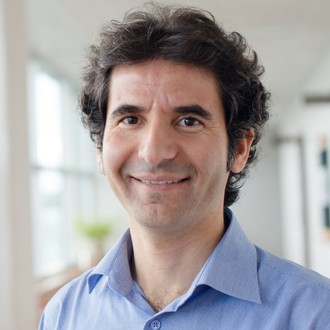Photonic Crystal Fiber
A special issue of Crystals (ISSN 2073-4352).
Deadline for manuscript submissions: closed (10 February 2018)
Special Issue Editor
Interests: metamaterials; plasmonics; photonic crystals; quantum information
Special Issues, Collections and Topics in MDPI journals
Special Issue Information
Dear Colleagues,
The conventional optical fibers had a lasting impact on the socio-economic advance around the globe. However, there is limited prospect for further improvement. The emergence of photonic crystal fibers (PCFs) have raised the hopes for a new leap beyond what is currently possible.
In 1995, Birks, et al. demonstrated PCFs with full two-dimensional bandgaps for all polarizations. The same group, in 1997, built an all-silica PCF which shows single mode behaviour at all wavelengths within the transparency window of silica. Knight, et al. in 1998, reported the realization of large mode area single mode fiber with a core diameter of fifty free-space wavelengths. In 1999, Cregan, et al. reported a hollow-core PCF which allows single mode photonic bandgap guidance of light in air. Ortigosa-Blanch, et al. reported in 2000, highly birefringent polarization maintaining PCF operating at telecom band. In the same year, the first Yb-doped PCF laser (Wadsworth, et al.) and white-light supercontinuum source (Jinendra, et al.) 10,000 times brighter than the Sun were also reported. First experimental demonstration of nondegenerate four-wave mixing and quantum-correlated photon pair were reported by Sharping, et al. in 2001 and 2004, respectively. In 2005, Al-Janabi and Wintner reported a high-power laser transmission through a hollow-core PCF.
Today, PCFs continue to find promising applications in a wide range of avenues including optical communications, optical amplifiers, lasers, nonlinear optics, ultra-high power transmission, sensing, and many more. This special issue aims to contribute meaningfully to a large body of existing work in the field in a way pointing to resources that are novel, scientifically intriguing, or technologically relevant. It is encouraged to submit papers on the topics including but not limited to ultra-low-loss transmission, quantum communications, new light sources and amplifiers, gyroscopes, resonators, basic optical toolbox elements, plasmonics, metamaterials, and high-resolution imaging and detection.
Prof. Dr. Durdu Guney
Guest Editor
Manuscript Submission Information
Manuscripts should be submitted online at www.mdpi.com by registering and logging in to this website. Once you are registered, click here to go to the submission form. Manuscripts can be submitted until the deadline. All submissions that pass pre-check are peer-reviewed. Accepted papers will be published continuously in the journal (as soon as accepted) and will be listed together on the special issue website. Research articles, review articles as well as short communications are invited. For planned papers, a title and short abstract (about 100 words) can be sent to the Editorial Office for announcement on this website.
Submitted manuscripts should not have been published previously, nor be under consideration for publication elsewhere (except conference proceedings papers). All manuscripts are thoroughly refereed through a single-blind peer-review process. A guide for authors and other relevant information for submission of manuscripts is available on the Instructions for Authors page. Crystals is an international peer-reviewed open access monthly journal published by MDPI.
Please visit the Instructions for Authors page before submitting a manuscript. The Article Processing Charge (APC) for publication in this open access journal is 2600 CHF (Swiss Francs). Submitted papers should be well formatted and use good English. Authors may use MDPI's English editing service prior to publication or during author revisions.
Keywords
- photonic crystal fibers
- optical communications
- light sources
- optical amplifiers





